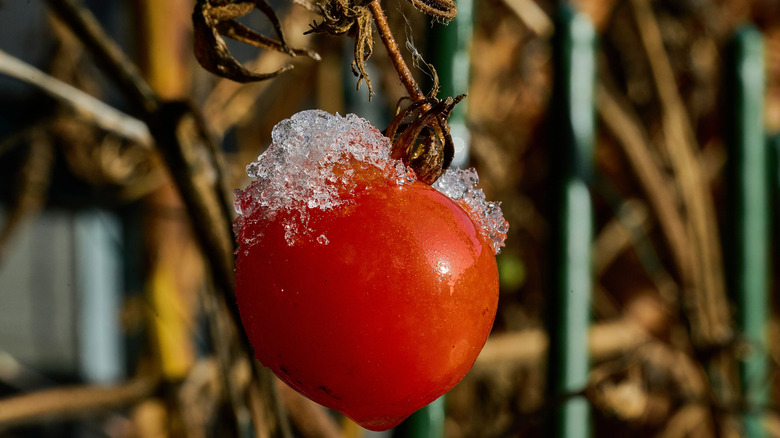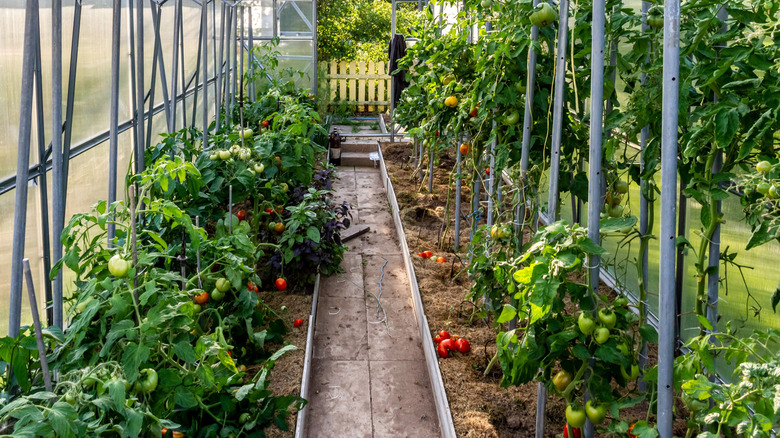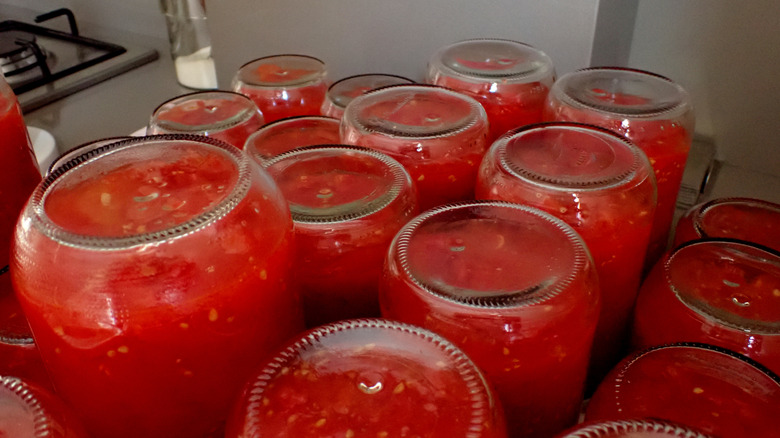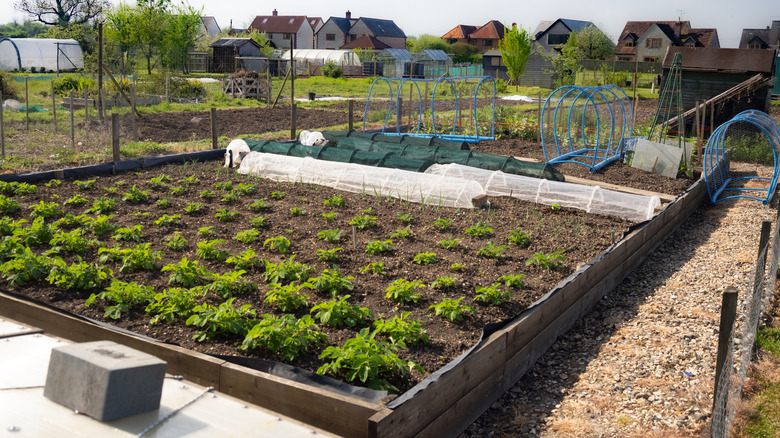The Game-Changing Tomato Planting Technique That Yields A Longer Harvest
Tomato growers know a certain unique dread. Whether they have a single cherry tomato plant grown in a container or rows of 'Rutgers' loaded with fruit, at some point in the summer, they have to dread the moment when there are no new tomatoes on the horizon. Maybe it's because a determinate variety has simply run its course, or maybe the indeterminates have finally given themselves over to this year's wilt or blight. Either way, it's a sad and dreaded day.
It's also a day you can put off, at least for a while. In a conversation with Tiffany Selvey, House Digest's garden editor and in-house master gardener, we asked about a little piece of magic called staggered planting, otherwise known as succession planting, a strategy for making the most of your garden space and your year. Selvey told us that there's time for new tomatoes as long as they can grow while the weather is still warm enough. "By choosing a variety of species and staggering planting times, a harvest can continue from about two months after the last frost date through summer and well into fall, for as long as the soil temperature stays above around 60 degrees Fahrenheit," she said.
How staggered planting can work for you depends on your climate, your mix of determinate species (which put out a crop of tomatoes and are done) and indeterminates (which keep producing indefinitely). "It may take some trial and error to find what works best in your environment," Selvey elaborated, "but staggered planting is a tried and true method."
Staggered planting tomatoes for a bumper crop
You might have had a little record-scratch sound in your head when you read that indeterminate tomatoes produce indefinitely. Why not simply plant all indeterminates and keep reaping the rewards? House Digest's resident master gardener, Tiffany Selvey, told us in an exclusive conversation that staggered planting is a more foolproof approach. "Planting a single indeterminate species doesn't guarantee a summer of consistent harvests," she said. "Disease, drought, pests, and other issues can shorten a plant's lifespan."
"In my garden," Selvey said, "I grow mostly indeterminate plants, but if I'm planning to can some of my harvest, I like to add a few determinate species." To keep the mix manageable when doing a staggered planting schedule, simply overlap plantings ... perhaps starting with early-maturing indeterminates and determinates, then adding more determinates after about a month. These will mature and fill in the gap after the first crop is spent.
And don't forget one of the most fun parts of growing tomatoes: cloning your favorites by taking cuttings of suckers. "July is a good time to take cuttings from healthy plants in your garden to start fall tomatoes," Selvey said. "Root those in water and move them to the garden in late July for a nice fall harvest."
Complications to expect with staggered planting
If staggered planting sounds too good to be true, take heart, because it works pretty much every time. But that doesn't mean there won't be some hiccups along the way. "Summer planting can be challenging for those living in climates that have hot, dry summers," House Digest's master gardener, Tiffany Selvey, told us exclusively. "Avoid planting tomatoes when the daytime temperatures are above 90 degrees or if there's a drought as this will likely keep them from thriving."
The dog days of summer might be a good time to round up those cuttings and maybe even start some seedlings indoors. This should help insulate your crop from the slowdown that can bring fall tomato production to a crawl. How late in the season you can push tomato planting depends on the climate where you live. "If you live in a warmer climate that stays above 80 degrees or so into September, it's also a good idea to plan a second planting of tomatoes to replace any that are lost to disease or pests," Selvey explained. "You can also grow a second round of determinates for fall canning."
Other plants can benefit from staggered planting, too
Staggered planting is a nifty tool for the vegetable gardener's kit that can maximize both food production and fun throughout the growing season. And it doesn't just apply to tomato plants, either. House Digest spoke exclusively with its in-house master gardener, Tiffany Selvey, who gave us hope for most of our vegetables that tend to run their course even though the weather would still allow for another harvest or two.
"Gardeners can benefit from staggered planting many vegetables," Selvey said. "Squash, green beans, peas, and cucumbers are all short-lived plants, so if you live in a region where your warm season lasts more than a few months, you can plant new seeds of these crops every few weeks for a consistent harvest."
The succession planting strategy is harvested from the wisdom of agricultural efficiency, and as you might expect, agriculture doesn't give up just because the weather turns a little cooler. "Those who live in cooler climates can succession plant radishes, lettuce, and other leafy greens and root crops for lots of veggies," Selvey said. And it's not just about veggies; if flowers are your thing, for example, you can get continuous sunflower blooms all season with succession planting. It's quite a win for those getting started in self-sufficient gardening. Plan carefully, and your growing season can grow into most of your year.



